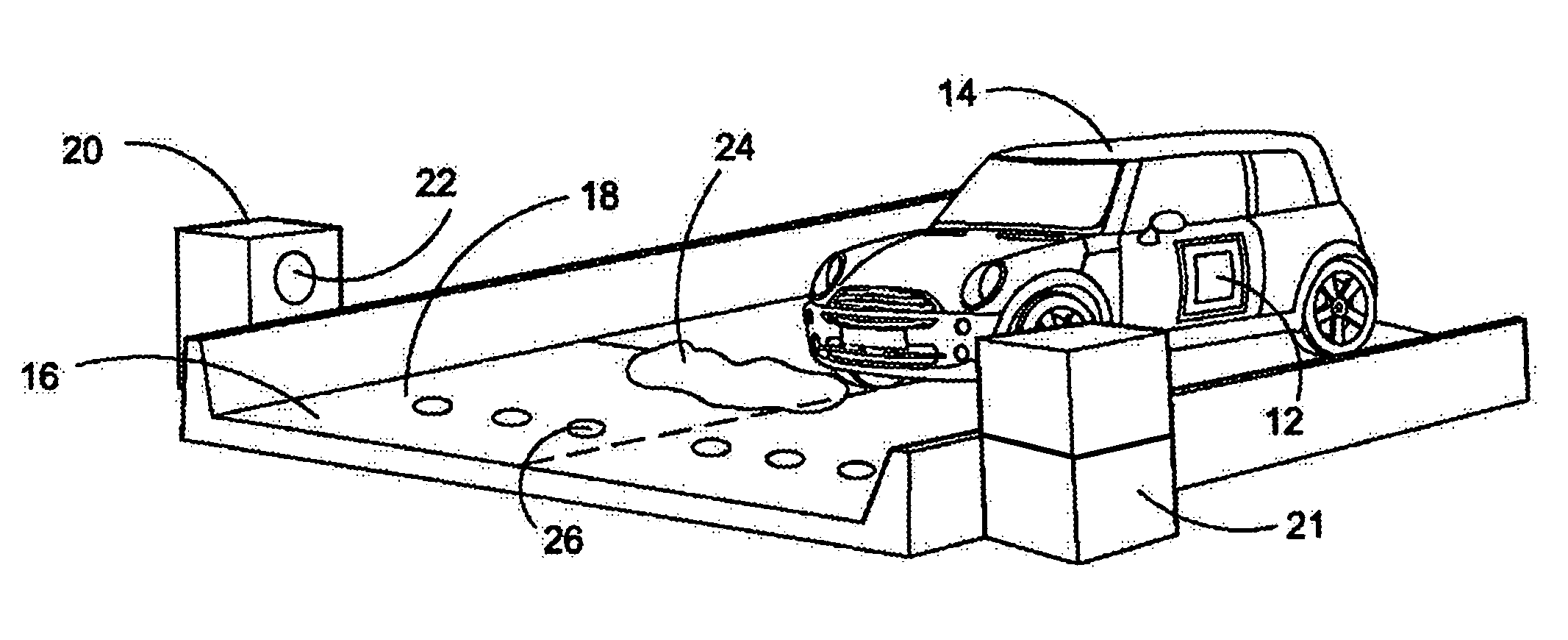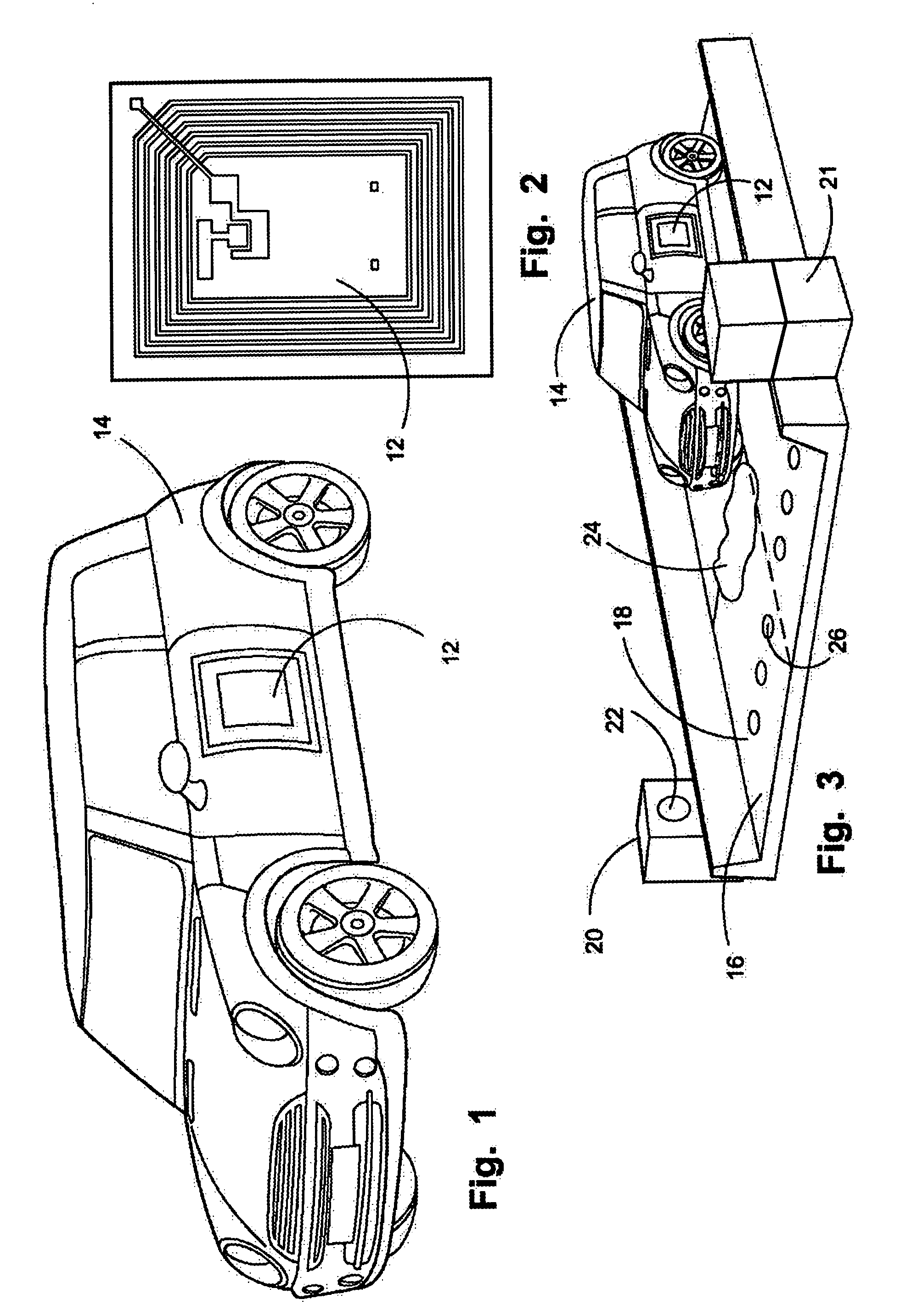Method and apparatus for remote control vehicle identification
a technology for remote control vehicles and identification methods, applied in sport apparatus, burglar alarm mechanical actuation, instruments, etc., can solve problems such as lasers posing a potential hazard to users, limited number of cars at the same time, and obvious human error and cheating in systems, so as to avoid most broadcast conflicts
- Summary
- Abstract
- Description
- Claims
- Application Information
AI Technical Summary
Benefits of technology
Problems solved by technology
Method used
Image
Examples
Embodiment Construction
[0046]Referring now to the drawings, FIGS. 1-4 depict the components of the device and system employed for remote control vehicle identification and tracking. These components may also be used in the registration system for race participants on a local or national scale. In addition to tracking the entrants in a race around a single race track, the device and system may also be used to track the individual racers and cars at a plurality of venues having substantially identical tracks. Essentially, using substantially identical or equal distance racetracks located at remote venues, the racers could race against each other and the system would track the progress of the various entrants around the various tracks to determine the winners.
[0047]In use the RFID tag 12 would have an onboard memory capability employing a microchip or other memory storage device which uses either programable memory or read only memory that would be programed with the car's identity along with the owner and a...
PUM
 Login to View More
Login to View More Abstract
Description
Claims
Application Information
 Login to View More
Login to View More - R&D
- Intellectual Property
- Life Sciences
- Materials
- Tech Scout
- Unparalleled Data Quality
- Higher Quality Content
- 60% Fewer Hallucinations
Browse by: Latest US Patents, China's latest patents, Technical Efficacy Thesaurus, Application Domain, Technology Topic, Popular Technical Reports.
© 2025 PatSnap. All rights reserved.Legal|Privacy policy|Modern Slavery Act Transparency Statement|Sitemap|About US| Contact US: help@patsnap.com



